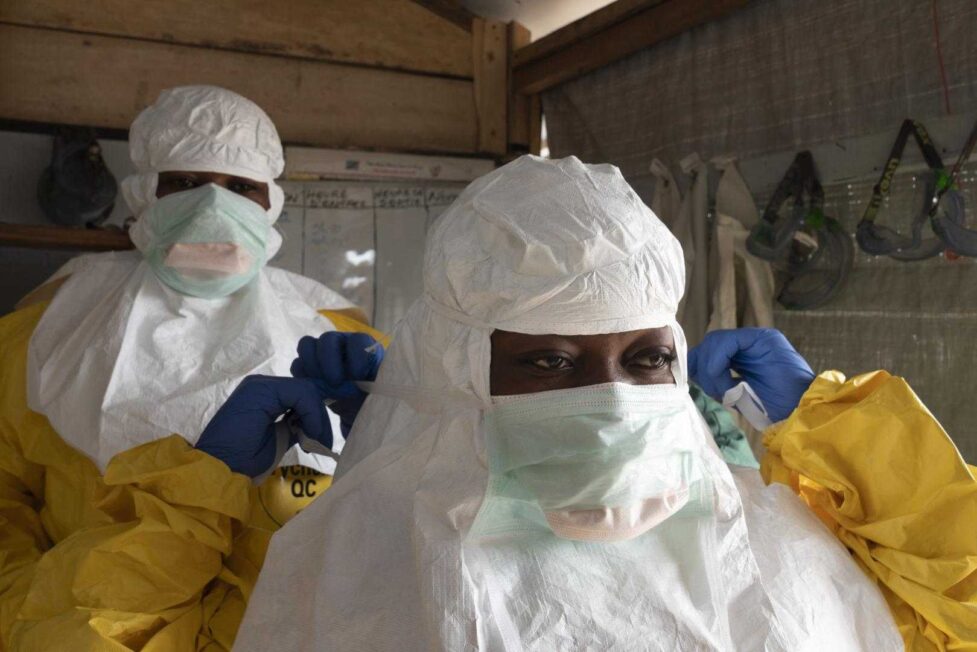Uganda on Saturday officially announced the end of its Ebola outbreak, less than three months after the virus was detected in Kampala on January 30, 2025.
This marks the country’s second Ebola outbreak in under three years.
Outbreak Overview
- Cases: 14 total (12 confirmed, 2 probable)
- Deaths: 4 (2 confirmed, 2 probable)
- Recoveries: 10
- Contacts Monitored: 534
Following the discharge of the last patient on March 15, 2025, Uganda adhered to the World Health Organisation’s (WHO) 42-day countdown, confirming no new cases before declaring the outbreak over.
GOOD NEWS! The current Ebola Sudan Virus Disease outbreak has officially come to an end.
This follows 42 days without a new case since the last confirmed patient was discharged on March 14 2025.
Our appreciation to our health workers, partners and communities for their support… pic.twitter.com/kZ53mW4cdI— Ministry of Health- Uganda (@MinofHealthUG) April 26, 2025
Swift and Effective Response
Uganda’s robust experience in managing infectious diseases, honed through past Ebola outbreaks (2000, 2007, 2011, 2012), enabled a rapid response. The Ministry of Health, with WHO support, implemented
- Coordination: Strengthened national response systems.
- Surveillance: Deployed rapid response teams and intensified border health screenings.
- Treatment: Established dedicated Ebola treatment centres.
- Community Engagement: Deployed anthropologists to build trust and reduce stigma.
WHO mobilised over 130 experts for case investigations, contact tracing, and diagnostics, testing more than 1,500 samples. Emergency medical teams ensured high safety and logistical standards.
“This outbreak challenged us, affecting both rural and urban areas amid global funding constraints,” said Dr. Chikwe Ihekweazu, Acting WHO Regional Director for Africa. “Uganda’s leadership and WHO’s partnership were critical to this success.”
Sudan Virus Strain
The outbreak involved the Sudan virus disease (SVD) strain, with a historical fatality rate of approximately 40%. While no licensed treatments exist for SVD, Uganda launched a clinical trial for candidate vaccines within four days, using a ring vaccination strategy. The antiviral remdesivir was also administered under emergency protocols.
Dr. Kasonde Mwinga, WHO Representative in Uganda, praised the response: “The Ministry of Health and Ugandan communities showed remarkable resilience, investigating every case and mobilising critical resources.”
Ongoing Commitment
Although the outbreak is over, Uganda’s Ministry of Health, with WHO and partners, will maintain:
- Enhanced surveillance
- Support for survivors
- Preparedness measures
About Ebola
Ebola is a rare, severe disease caused by viruses in the Orthoebolavirus genus. Three species—Ebola virus, Sudan virus, and Bundibugyo virus—have caused major outbreaks since the disease was first identified in 1976 near the Ebola River in the Democratic Republic of the Congo.
Key Facts
- Fatality Rate: Averages 50% (ranges from 25% to 90%)
- Transmission: Through contact with infected animals (e.g., bats, primates) or human bodily fluids
- Symptoms: Fever, fatigue, muscle pain, headache, sore throat, vomiting, diarrhea, rash, and, in severe cases, bleeding or neurological issues
- Incubation Period: 2–21 days
Transmission
Ebola spreads via:
- Contact with infected animals (e.g., bats, chimpanzees, or antelopes)
- Human-to-human contact through bodily fluids or contaminated surfaces
- High-risk scenarios: Healthcare settings or traditional burial practices without proper infection control
Individuals are not contagious until symptoms appear.
Diagnosis
Early symptoms mimic malaria or typhoid, requiring laboratory confirmation (e.g., PCR, ELISA). Sample handling demands strict biosafety measures.
Treatment
No cure exists for some Ebola strains, but
- Ebola Virus Disease (EVD): Monoclonal antibodies (mAb114, REGN-EB3) are recommended.
- Sudan/Bundibugyo Viruses: Experimental treatments are under study.
- Supportive Care: Rehydration, pain management, and treating co-infections are critical.
Vaccines
- EVD: Two approved vaccines (Ervebo; Zabdeno + Mvabea) are used in outbreak response and preventive campaigns for healthcare workers.
- SVD: Vaccine candidates are in development, with trials assessing safety and efficacy.
Prevention and Control
Effective outbreak control relies on:
- Clinical care and isolation
- Surveillance and contact tracing
- Safe burials
- Vaccination (for EVD)
- Community engagement to reduce stigma and promote hygiene
Public education emphasises avoiding contact with infected animals, minimising exposure to bodily fluids, and ensuring safe healthcare and burial practices.
Rising Infections: East Africa on Alert as Marburg Cases Spread




